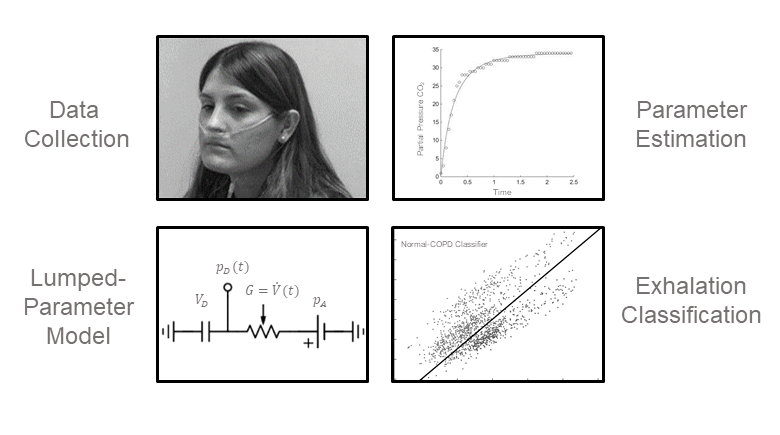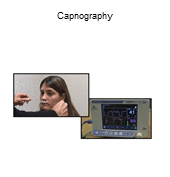
Capnography is the noninvasive and effort-independent measurement of carbon dioxide concentration in exhaled breath, as a function of time or exhaled volume. Time-based capnography – the focus of this paper – is widely used in ambulances and hospitals. However, its quantitative application is currently limited to determining respiratory rate and end-tidal (i.e., end-exhalation) carbon dioxide concentration.
We previously developed algorithms to extract and exploit additional quantitative features of the capnogram, allowing us to discriminate with very good accuracy among subjects with normal respiration, patients with chronic obstructive pulmonary disease (COPD), and those with congestive heart failure. This paper pursues an alternate approach, developing a simple physiologically based mechanistic model of carbon dioxide exhalation that closely accounts for the capnogram shape in normal subjects and in patients with obstructive lung disease. The three key parameters of the model are the mean alveolar carbon dioxide concentration, the dead-space fraction, and the exhalation time constant. Under a further simplifying assumption, we derive a novel closed-form double-exponential solution for the capnogram generated by the model. By fitting this analytical solution to the recorded capnogram, we obtain patient-specific estimates of the model parameters, and these agree well with the ranges of values reported in the literature.
We show that the estimated parameters of the model suffice to discriminate with high accuracy between normal subjects and patients with COPD. As a second application, we demonstrate that changes in the estimated parameters for asthmatics can be used to track variations in their respiratory status during methacholine challenge testing, where obstructive breathing is initially induced through inhalation of methacholine and then reversed through bronchodilator administration. These results suggest that quantitative model-based analysis of the capnogram provides insights into patient respiratory state, which may help to improve medical care.

